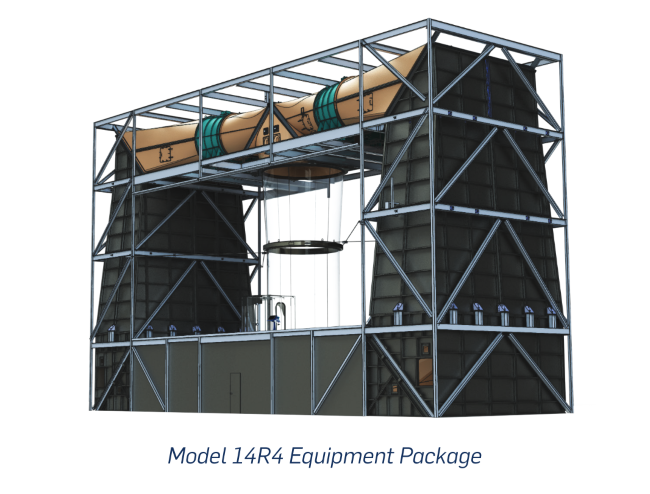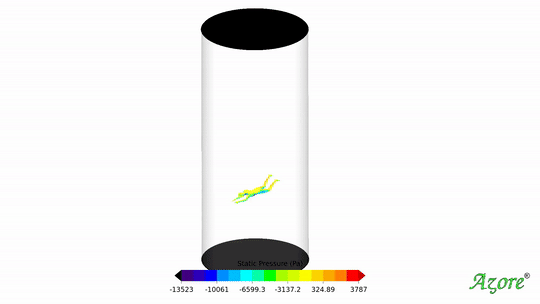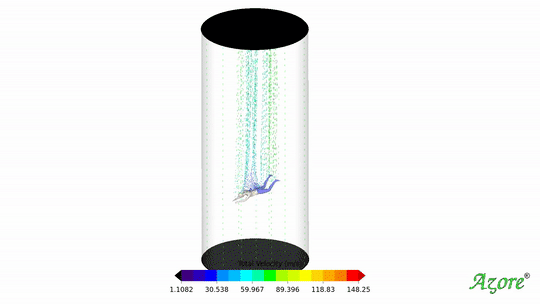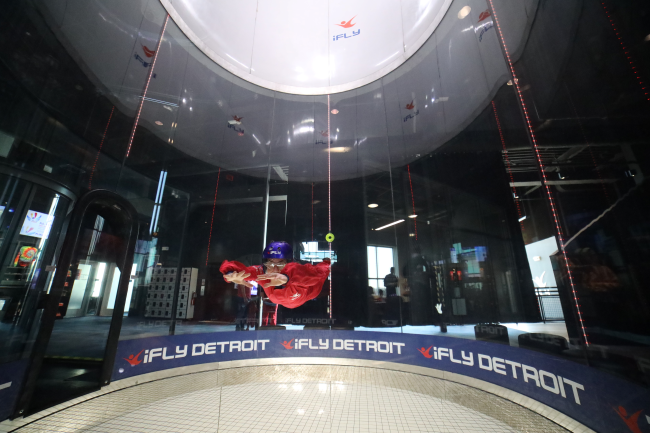AZORE® CFD Visits iFly
By Logan Szajnecki
If you’re anything like myself, you are terrified of heights; yet, you have always wondered what it feels like to plummet from an airplane into the open sky (with a parachute, of course). Indoor skydiving companies like iFly bridge the gap between expensive, intimidating leaps of faith and pure free-falling fun. Developing the facilities needed to pull off this inexpensive alternative to skydiving is no small feat of engineering. In fact, iFly facilities such as the Gen 9–14R4 are large structures built around a vertical wind tunnel, which inevitably draws the attention of simulation engineers.

The question is then: how well can Azore® engineers computationally simulate a skydiver’s experience inside one of iFly’s wind tunnels? Our engineers can take on the challenge of solving this complex flow by using the AzoreCFD solver package. In addition, by creatively making use of Pointwise® for meshing and OpenVSP for humanoid geometry generation, our engineers can create a realistic simulation of the iFly experience!
The moving air inside of the model 14R4 needs to exert a force on the skydiver that’s large enough to overcome the skydiver’s weight. The maximum airspeed that the 14R4 is capable of producing is 163.5 mph (73 m/s) and the question becomes: how much upward force is the air exerting on the skydiver during this airflow condition? AzoreCFD can effectively determine these surface forces by calculating the static pressure forces and the shear forces acting upon the skydiver.
During the “maximum airspeed” tunnel condition, the static pressure acting on the skydiver’s stomach is higher than the static pressure acting on their back. This is a good thing, since it indicates that flight is possible due to the pressure differential between the upper and lower surfaces of the skydiver.

The humanoid geometry used by Azore in this simulation is determined to weigh 152 lbs (69.2 kg) and the total upward force is calculated by AzoreCFD to be 193.23 lbf (859.54N). In essence, while subject to the maximum airspeed produced by the 14R4 tunnel, our model skydiver will feel a net upward force of 41.2 lbf (181.08N) – which is like tying a 20 pound weight to your each of your ankles and jumping into a pool!

While it is good that the maximum airspeed produced by the 14R4 tunnel is sufficient for flight, the tunnel does not operate at this condition continuously. Better is the question: at what airspeed must the tunnel operate to simulate a “free-fall” experience for a 152 lb flyer? By using a few clever engineering tricks, our engineers were able to confirm with Azore that an airspeed of 64.84 m/s is the sweet spot at which a 152 lb diver would experience free-fall!
Pictured below is Azore’s own Jeff Franklin, the lead developer of AzoreCFD, flying high at iFly Detroit!


